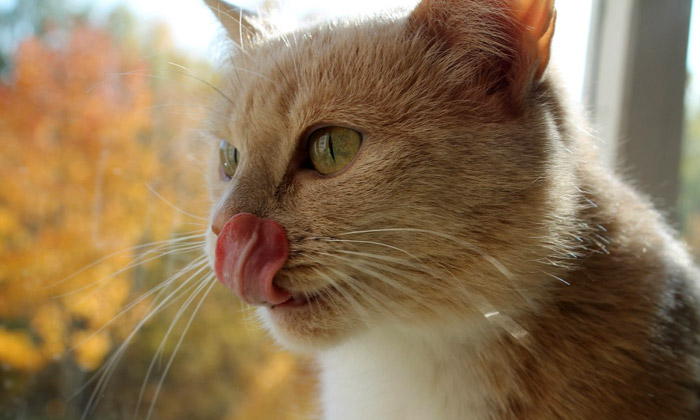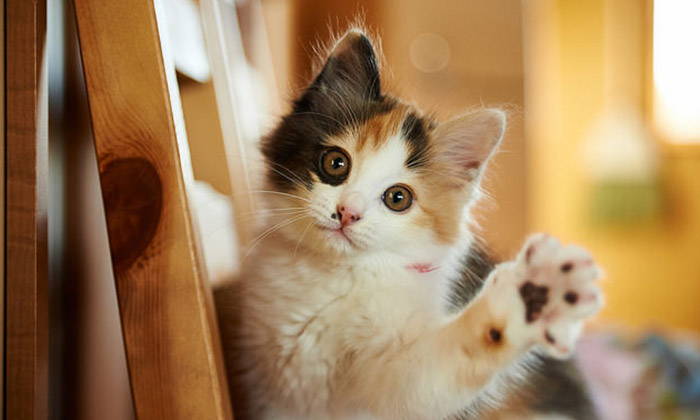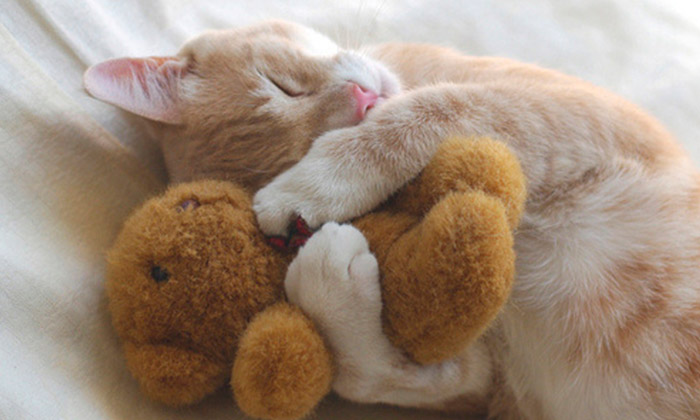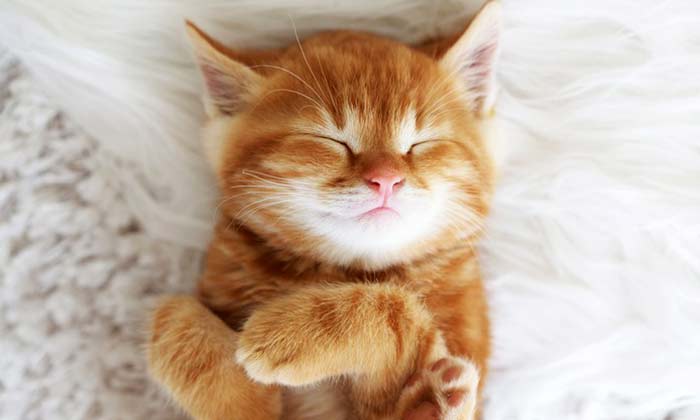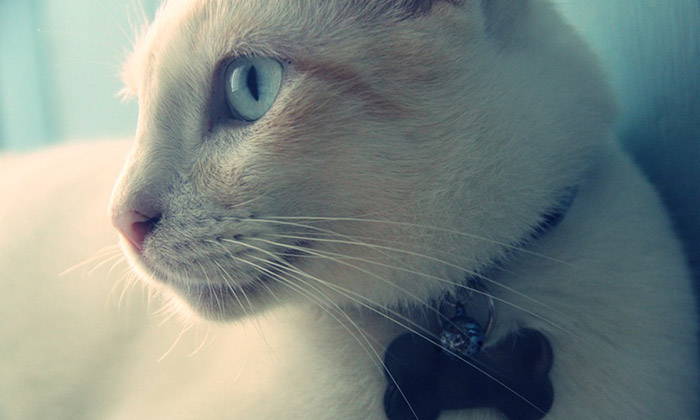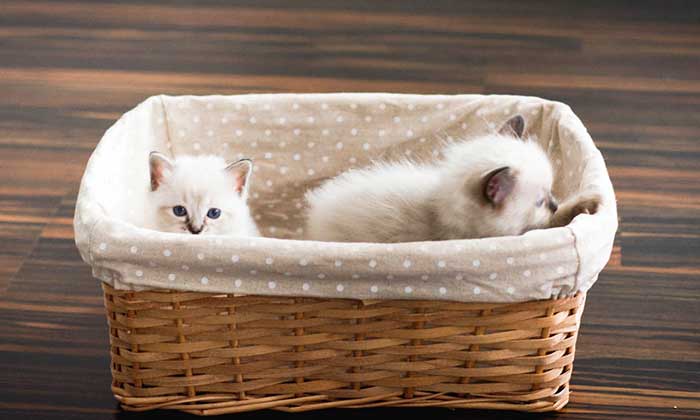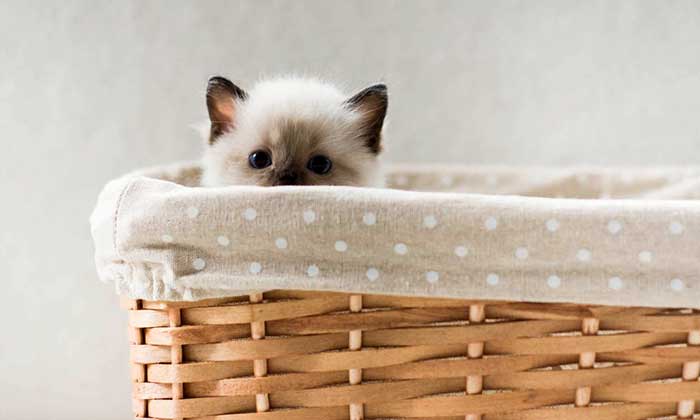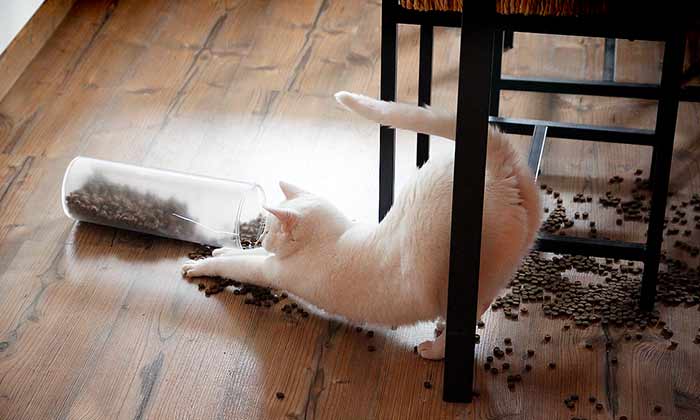Cat Teeth: 10 Tips for Cat Dental Care
Your cat may not be hunting in the wild, but he still needs cat dental care for healthy, strong cat teeth and gums. Minor dental issues can become serious health problems if they are not treated early. The good news is these diseases can be easily prevented with simple teeth brushing and basic check-ups.
Cat Teeth Cleaning – Tips for Cat Dental Care
1. Pass the Breath Test
Your cat’s breath may not be minty fresh, but it shouldn’t be foul, either. If you notice a strong odor coming from your cat’s mouth, this could be a sign of gingivitis or digestive problems. Take your cat to see a vet if this odor lingers or worsens.
2. Examine Your Cat’s Mouth
Carefully push back your cat’s lips to expose his teeth. The gums should appear pink, not red or white. Your cat’s teeth need to be clean and free of any imperfections. If you notice any discolored or broken teeth, it could indicate an underlying health condition that needs immediate treatment.
3. Watch for Warning Signs
If your cat has a dental condition that is left untreated, it could become a much more serious problem! Be on the lookout for any of these signs, as they might be signs of dental disease:
- Swollen, red gums
- Ulcers on the gums or tongue
- Dark red line along the gums
- Pus or discharge
- Loose teeth
- Uncontrollable drooling
- Difficulty chewing or swallowing food
- Excessive pawing at the mouth area
- Dropping food from the mouth
- Weight loss from malnutrition
Remember, some cats won’t show any symptoms at all. Be sure to check your cat’s teeth, mouth, and gums periodically to make sure you don’t miss a sign!
4. Report Any Swelling
You should consult a veterinarian at the first sign of gum inflammation. If you wait too long to treat this condition, your cat could develop gum disease, which could result in tooth loss and malnutrition. Gingivitis could also indicate an underlying condition like the Feline Immunodeficiency Virus or kidney disease. Take it seriously!
5. Prevent Tooth Decay
Overgrowth of bacteria can cause a buildup on your pet’s teeth. If left untreated, a thick layer of tarter can form, which is much more difficult to clean. You can easily prevent tarter formation with regular teeth cleanings.
6. Keep a Tooth Brushing Kit on Hand
 Make a simpletooth brushing kit and store it in a place where you will remember to use it often. Include a small toothbrush, cotton swabs, and toothpaste made especially for cats.
Make a simpletooth brushing kit and store it in a place where you will remember to use it often. Include a small toothbrush, cotton swabs, and toothpaste made especially for cats.
DO NOT use toothpaste intended for people, as some of the ingredients may be harmful for felines. Ask your veterinarian for a recommendation. The toothbrush should be designed specifically for cats as well. It should have soft bristles and should be much smaller than a human toothbrush.
7. Keep Your Cat’s Teeth Clean
Ideally you should introduce dental care to your feline friend at a young age. You shouldn’t brush a kitten’s milk teeth, but you should make sure your kitten is used to having his teeth touched.
If your cat is unfamiliar with dental care, try these simple steps to introduce it:
- Put a tiny bit of cat toothpaste on the tip of your finger and offer it to your cat to lick. Many cat toothpastes come in flavors like chicken or malt, so they should be appealing to your cat. Do this daily so your cat can get accustomed to the flavor and texture of the toothpaste.
- Choose a consistent time each day to make this part of your cat’s normal routine. Be sure to choose a time when you and your pet are relaxed and comfortable.
- Position your cat with his back to you, so he is facing forward. When you start brushing, he may try to back away from the brush. If your cat still resists the toothbrush, you may need for someone else to hold him while you brush. This should be a last resort though.
- As with any new process, give your cat time to adjust. Begin by gently massaging your cat’s gums with your fingers, or lightly brushing them with a cotton swab. Reassure your pet with calm, soothing words of encouragement. It’s important that your pet associates the toothbrush with a pleasant experience.
- Once your cat is receptive, carefully pull back his lips and lightly touch the toothbrush to his teeth. Then reward your cat with a treat. Repeat this for several days. When your cat seems comfortable, begin brushing his teeth. Apply a small amount of toothpaste to the brush and position the brush at a 45-degree angle. The bristles should touch the surface of the teeth and just beneath the gum line, but they should not be directly on the gums themselves.
- Your first tooth brushing session should only last about 10 seconds so your cat does not get overwhelmed. After 10 seconds of brushing, reward your cat for cooperating.
- If you notice any bleeding or major discomfort, stop brushing and consult a veterinarian before proceeding. If your cat already has gingivitis, then brushing can aggravate his gums. Your veterinarian can recommend specialized treatments for severe cases to remove buildup without damaging the teeth.
- Keep in mind that some cats will resist tooth brushing even if they have healthy teeth. If you have tried to brush your cat’s teeth several times without success, talk to your veterinarian about other options, like oral hygiene gels. These products inhibit bacteria overgrowth, and you can apply them directly or mix them with your cat’s food.
8. Give Your Cat Chew Toys
In addition to being entertaining for your cat, chew toys can help strengthen teeth and scrape away tarter. Give your cat a toy that will help him stay healthy!
9. Modify Your Cat’s Diet
If your cat struggles with recurring dental issues, ask your veterinarian to recommend different food. Some kibbles are designed to help remove plaque and tarter.
10. Remember These Mouth Disorders
Consult your vet immediately if your cat shows any of these signs or symptoms:
- Mouth Ulcers: lesions on the gums or tongue that can indicate kidney or respiratory disease.
- Rodent Ulcer: a progressive swelling or sore on the upper lip.
- Salivary Cyst: a growth that forms under the tongue when salivary glands become blocked.
- Gingivitis: inflammation of the gums. This condition is primarily seen in older cats. It may begin has a dark red line where the teeth meet the gums. As the condition worsens, ulcers may appear on the gums.
- Periodontitis: a serious gum infection that compromises the root of a tooth. An infected tooth can become loose, which can cause an abscess to form.
- Stomatitis: inflammation of the mouth lining resulting from a viral disease, untreated dental problems, or a foreign body. The inside of the mouth will appear red, and eating may be painful for your cat.
By giving your cat a balanced diet, regular tooth brushing, and close supervision, you will ensure your furry friend is healthy and happy. With a little patience, you and your pet will establish a dental care routine that works for both of you.

